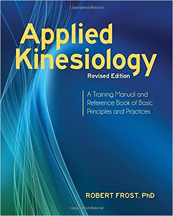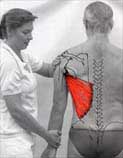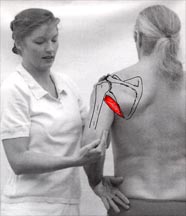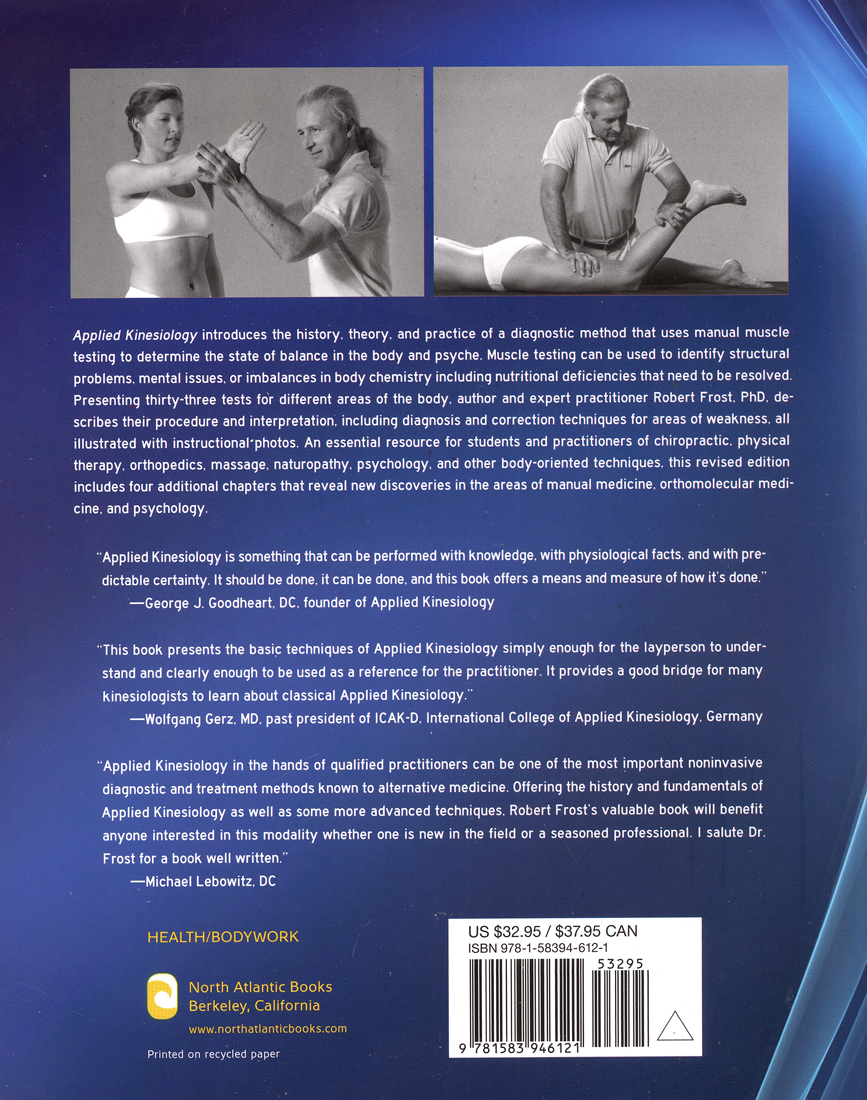 |
The name of the game, to quote a phrase, is to get people better. The body heals itself in a sure, sensible, practical, reasonable, and observable manner. “The healer within” can be approached from without... It should be done, it can be done, and this book offers a means and a measure of how it can be done. My appreciation to the author and his staff for the excellent job he has performed in advancing these principles, and my best wishes are extended to all who read this manual. - George J. Goodheart, Jr., D.C., FICC Diplomate, ICAK |
Applied Kinesiology -
A Training Manual and Reference Book of Basic Principles and Practices
New Edition ©2013
This is the first in depth book about the original principles and practices of Applied Kinesiology that strives to be understandable for those without a medical background. Here you will find:
• A short history of the development of Applied Kinesiology (AK).
• A detailed theoretical presentation of the basic principles of AK.
• A precise “how-to-do-it” presentation of the basic procedures of AK.
• A collection of useful more advanced AK techniques.
• A selection of 33 muscle tests with specific correction techniques.
• A step-by-step plan for applying these procedures in a therapeutic session.
• A selection of case histories using these techniques.
Here is a standard for both those with interest in exploring the field of Applied Kinesiology and a useful reference for the practicing kinesiologist.
Test and strengthening procedures for 33 muscles are precisely described and illustrated with professional photos and graphic diagrams. Basic and advanced AK techniques are depicted and summarized in a step-by-step procedure for application in therapy sessions. For both therapists who use classical Applied Kinesiology and also for all others who use muscle testing, this book offers a detailed introduction in the operating procedure of AK which will open new perspectives and make their work more effective.
 |
With the tested muscle and attached bones graphically illustrated upon the photograph of the muscle tested, visualizing the muscle test and the structures involved is made easy. |
 |
 |
TABLE OF CONTENTS
Forward by George J. Goodheart
Acknowledgements
Introduction
Chapter 1: FROM BIOMECHANICS TO APPLIED KINESIOLOGY
How Muscles are Tested in Applied Kinesiology
The Development of Traditional Kinesiology or Biomechanics
A Short History of Applied Kinesiology
A Short Discussion of the Anatomy and Physiology of Muscles
Definitions
Chapter 2: SCIENTIFIC PRINCIPLES OF APPLIED KINESIOLOGY
Anatomy And Physiology Of The Muscles And Related Structures
Neurophysiology: The Nervous System
Neurophysiology: The Nerve Receptors
Stress Research and Applied Kinesiology
A Change in World View: From Newtonian Mechanics to Quantum Mechanics and Chaos Theory
Biological Medicine and the Systems of Regulation
Chapter 3: THE CENTRAL TOOL OF APPLIED KINESIOLOGY - THE MUSCLE TEST
Muscle Testing: Theory, Procedure and Interpretation
Examiner Prejudice or Impartiality
Applications of Muscle Testing
Challenge
Therapy Localization
Surrogate Testing
Chapter 4: PRETESTS
How to Prepare an Indicator Muscle for Accurate Testing
A. Is Dehydration Present?
B. Does the Muscle Test Strong “In the Clear”?
C. Can the Muscle be Weakened?
D. Is the Individul Muscle in a Hypertonic State?
Is Neurological Disorganization (Switching) Present?:
E. Ocular Lock
F. Kidney 27 and Ocular Lock Correction
G. Auxiliary K 27
H. Central (Conception) Vessel and Governing Vessel (CG 24, GV 27, GV 1)
Muscle Testing Pretests - A summarized Overview
General Hypertonicity
Chapter 5: DIAGNOSIS AND CORRECTION TECHNIQUES
The Origin-Insertion Technique
Neurolymphatic Reflexes
Neurovascular Reflexes
The Meridian System
Diagnosis of the Reaction to Substances and Other Stimuli
Hidden Problems
Activation of the Right and Left Halves of the Brain
Repeated Muscle Testing
Facial Release or Chill and Stretch Techniques for Muscle Stretch Reaction
Reactive Muscles
Exercise
Chapter 6: MUSCLE TESTS
Adductors
Deltoids: Anterior, Middle and Posterior
Gluteus maximus
Gluteus medius
Hamstrings (Medial and Lateral)
Iliopsoas
Infraspinatus
Latissimus dorsi
Middle and Lower trapezius
Pectoralis major clavicular
Pectoralis major sternal
Pectoralis minor
Peroneus tertius
Peroneus longus and brevis
Piriformis
Popliteus
Rectus abdominis group
Rectus femoris
Rhomboid major and minor
Sacrospinalis
Sartorius
Serratus anticus
Sterno-Cleido-Mastoideus - Neck Flexors
Subclavius
Subscapularis
Supraspinatus
Tensor fascia lata
Teres major
Teres minor
Trapezius, Lower
Trapezius, Middle
Trapezius, Upper
Chapter 7: STRUCTURE
Ligament Interlink Technique
Strain Counterstrain Technique
Gait Testing
Cloacal Synchronization
Hyoid Bone
Injury Recall Technique
Ocular Lock
Eyes into Distortion
Eyes Out of Distortion
Body into Distortion
Proprioceptive Neuromuscular Facilitation
Chapter 8: CHEMISTRY
Substance Testing
Retrograde Lymphatic Technique
Hot or Cold?
Chapter 9: PSYCHE – MIND AND EMOTIONS
Emotional Neurovascular Reflex Points
Reversals and Conflicts
Temporal Tapping
Front Brain - Back Brain
Phobias
Homolateral Organization
Chapter 10: Diagnostic Protocol
Standard Applied Kinesiology Diagnostic Protocol
Structural ScreeningMental/Emotional Screening
Hidden Weakness Screening
Chemistry Screening
GLOSSARY
Anatomical Terminology
Vocabulary
Correspondences of Meridians, Muscles, and Organs/Glands
Sedation Points
Step-by-Step Plan for Conducting a Session with AK Techniques
Applied Kinesiology Techniques of Examination and Diagnosis
Additional Tips for the Correcting of Weak-Testing Muscles
How to Improve and Maintain Optimal Health:
General Health Tips for the Therapist to Tell to his Patients
Case Histories
Bibliography
Contact Addresses and Sources
Index
Index Of the Main Muscles Discussed in this Text
Example Chapters:
A Change In World View: From Newtonian Concepts To Quantum Mechanics and Chaos TheoryBack Cover
